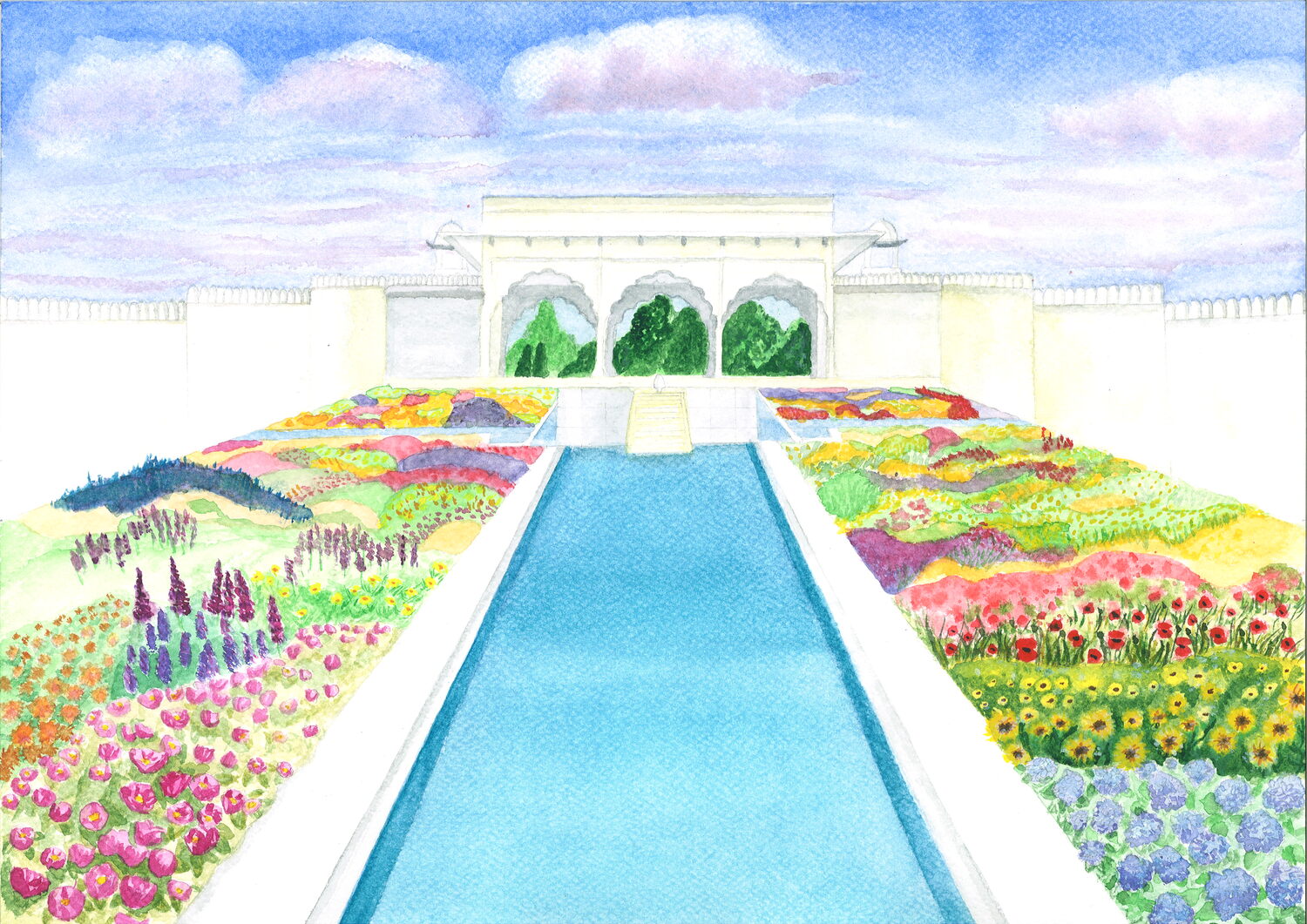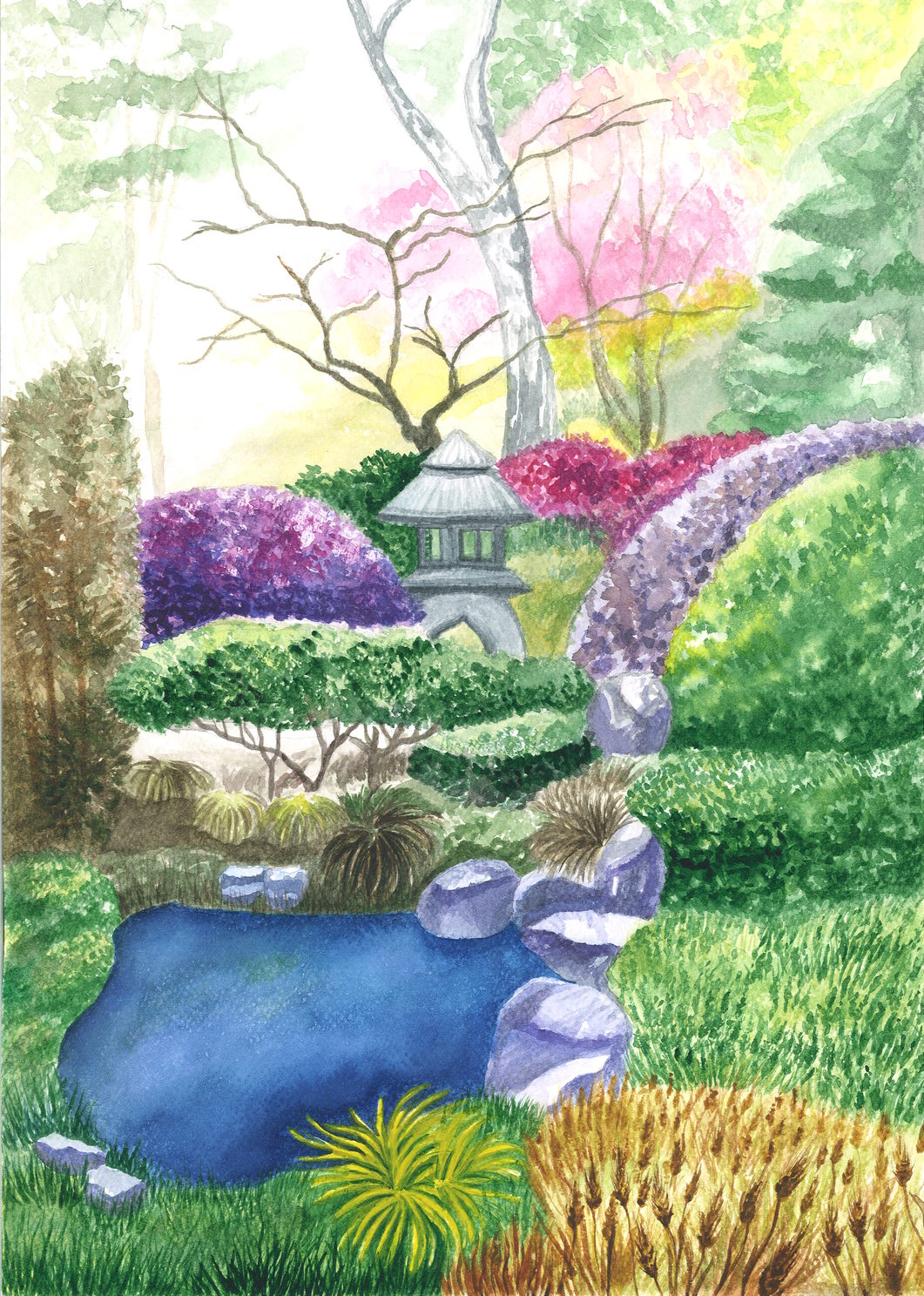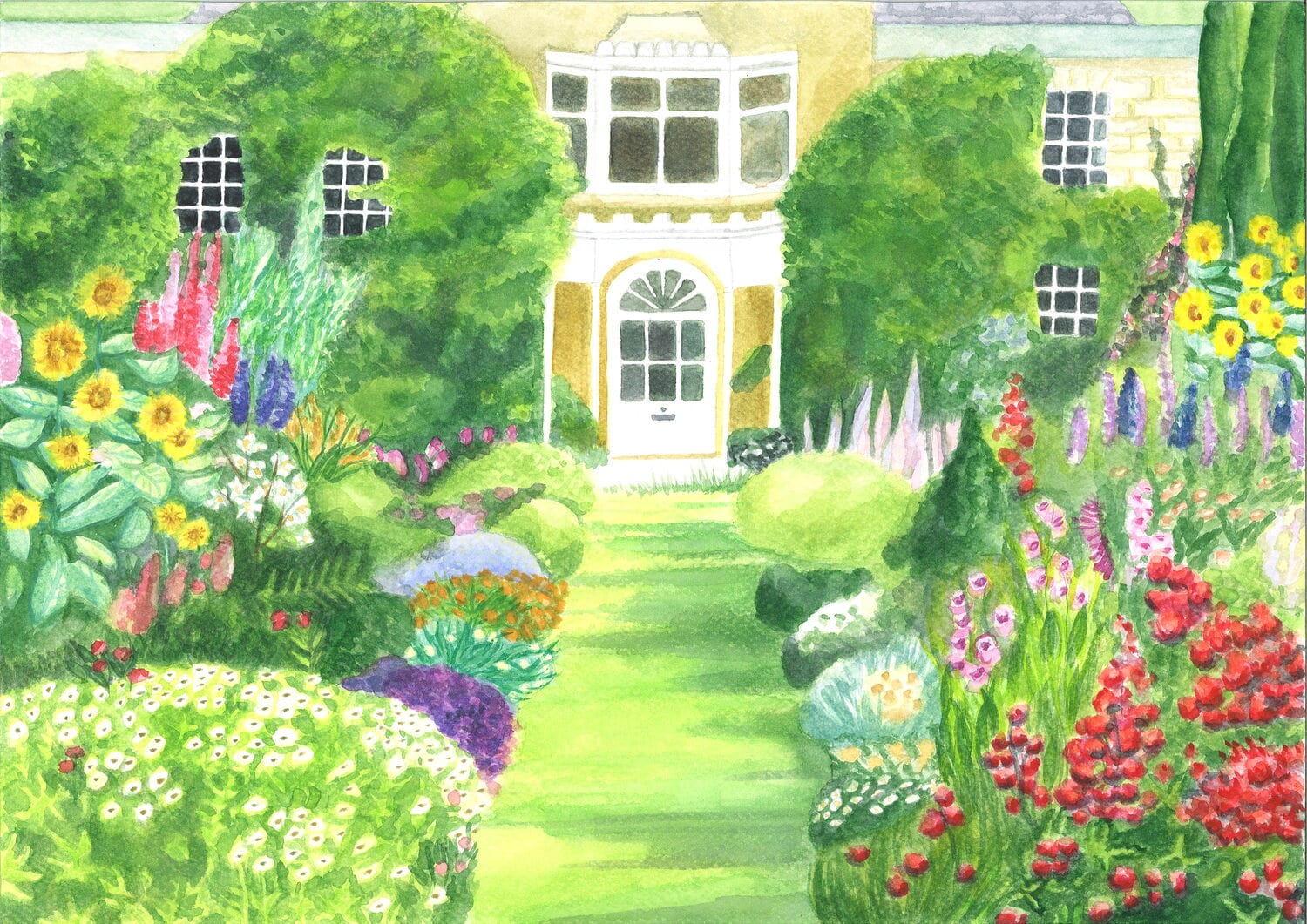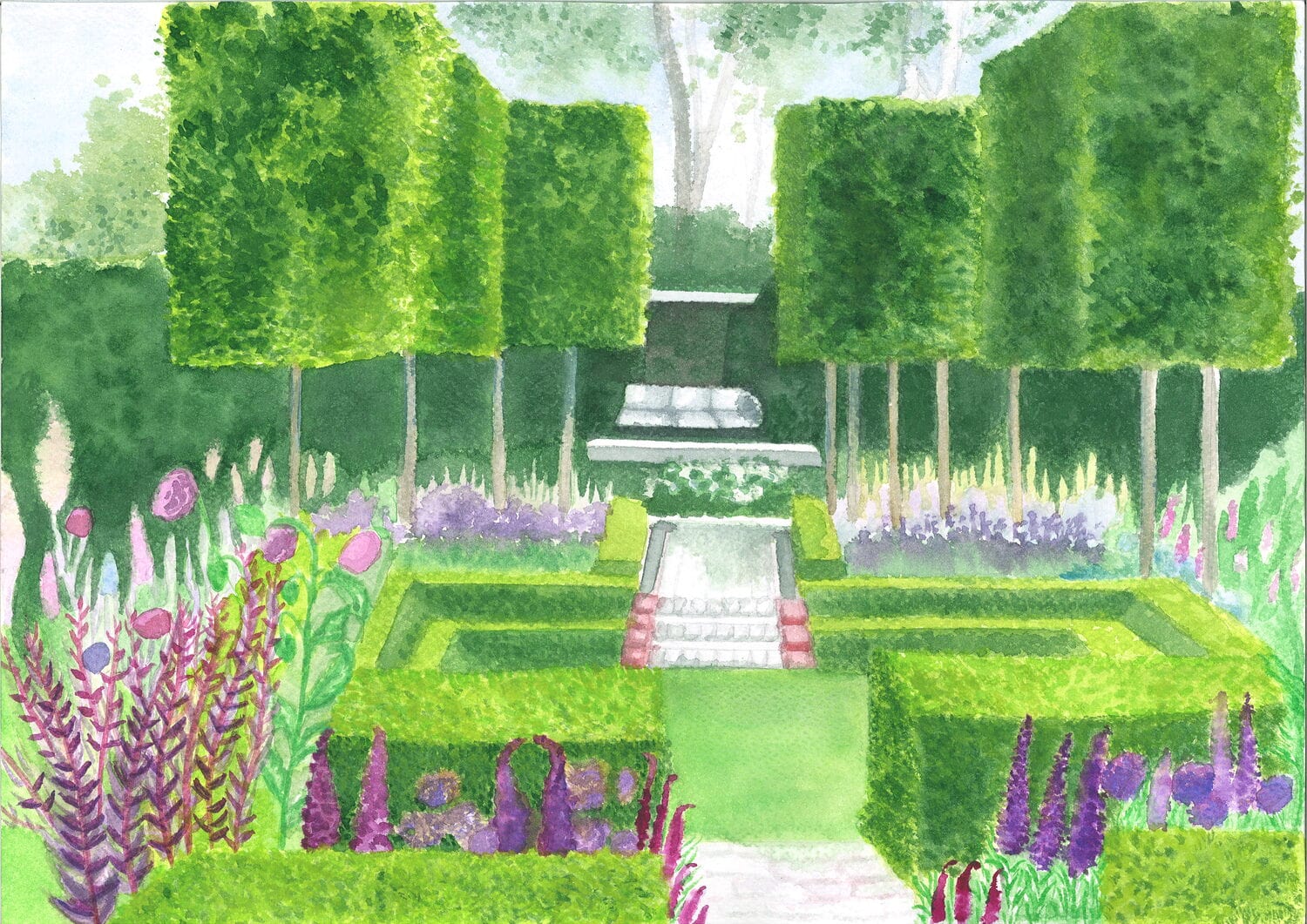Indian Char Bagh Garden

The ‘char bagh’ or ‘enclosed four part’ garden has been one of the most significant types of traditional garden. Between 8th and 18th centuries these gardens spread through the Muslim world form Asia and North Africa to Spain. They were the original ‘Paradise Gardens’, also known as the ‘Universal Garden’, because of the widespread use and their traditional symbolism for the universe itself derived from very ancient roots in Hinduism, Judaism, Christianity, Islamism, and Buddhism. In India these gardens became a distinctive art form during the 16th and 17th centuries, firstly under the Mughal rulers, then later the Hindu aristocracy. The Indian char bagh gardens were poetic, secret, pleasure gardens in which you could feel the breezes in the open sided pavilion, hear the sound of sparkling water, and enjoy the perfume of flowers in a living Persian carpet.
Japanese Garden of Contemplation

The Muromachi period in Japan (1333-1568) saw a flowering of traditional Japanese garden design. Design principles evolved from Buddhist, Confucian and Taoist philosophies and combined with a keen observation of nature to produce gardens that were highly abstract, monochromatic visions of natural landscapes. In a Japanese garden of this type your gaze is carefully directed and the garden is gradually revealed in stages, rather than being revealed at once in a panorama. Dry landscape garden (karesansui) in expressing water without water and movement without movement, this garden expresses the contradictions that Zen practice attempts to transcend. This garden must be viewed only from the pavilion. It is constructed to give an abstract interpretation of a natural landscape. Contemplating views such as these, monks would practice Zazen (deep meditation).
English Flower Garden

This garden is inspired by gardens associated with the Arts & Crafts Design Movement of 1880-1910, which grew out of a concern about the effects of industrialisation on traditional crafts. Unlike earlier Victorian gardens in which the plants were displayed in a very artificial manner, Arts and Crafts designers pain more attention to creating a natural–looking planting scheme. They took the emphasis off individual plants and instead placed it on the whole garden as an artistic composition. The planting scheme was often designed according to laws of colour association and set within a formal framework of hard landscaping that unified the garden. These gardens were high maintenance so they were owned only by individuals who could afford a large gardening staff. The advent of the First World War and subsequent changes in the social order led to the demise of these ‘Gardens of Golden Afternoon’.
Modernist Garden

Towards the middle of the 20th century, landscape designers began to create gardens that were intended
to complement the new modernist architecture of the time.
These new gardens were often characterised by asymmetric forms, curving lines, functional spaces and
modern materials, and they often incorporated design ideas and images from modern art.
The plants used in Modernist gardens were often native to the local area. For many modernist landscape
architects the garden is designed as a space for outdoor recreational activity. Often they are
designed to have good indoor-outdoor flow. Some of the best modernist designs are beautiful simply
because they are perfectly suited to their purpose and site. They are gardens for sunbathing,
swimming, barbecues and al fresco dining.
* Garden types description based on Hamilton Gardens: hamiltongardens.co.nz


